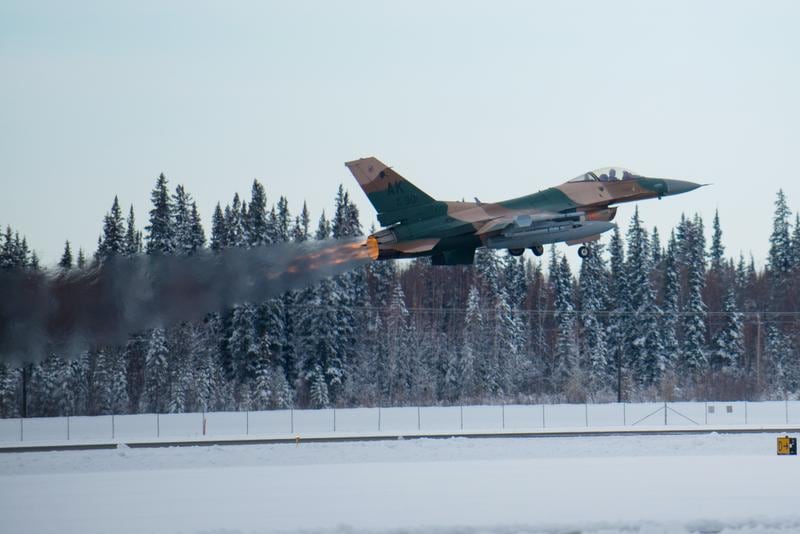As the 1st Special Forces Operational Detachment-Delta's primary firearms instructor, Larry Vickers worked in a place that put more than a million rounds a year through 1911s. He's a founding member of the International Defensive Pistol Association and is a member of the American Pistolsmiths Guild. When he says he's seen everything that can go wrong with a 1911, I believe him.
"Now, I shoot a Glock," Vickers tells me. "Make sure you tell guys that the 1911 is a pain in the ass. If they don't like messing around with the pistol and spending a grand to really get it tuned, then they should forget it."
Modern pistol designs have made the 1911 obsolete in its role as a combat sidearm. It's finicky and demands constant attention that a warfighter can't afford to offer. But when it's tuned and running well, it's the most accurate pistol out there.
Warnings aside, the pistol's appeal is strong and romantic. Picking up the pistol feels like shaking hands with John Wayne. It shoots man-sized rounds and, when tuned, it shoots a quarter-sized group at 50 yards.
But the 1911 is not a plug-and-play platform. Even a $2,000 semi-custom 1911 likely will need a pricey trip to a gunsmith for tweaking. Changing out all but the simplest parts will demand expert hand filing and fitting.
"I've had guys sell their pistols after taking my 1911 armoring class because they realized the gun just wasn't for them," Vickers says.
If you can't be swayed — and you have the patience and the budget — here's an idea of what to look for as you step into the world of the 1911.
[Bonus! Here's a link to the above image as a hi-res jpeg you can use for your desktop wallpaper.]
SLIDE & FRAME
Vickers' first choice for a base gun is a government-model, carbon steel Colt, Springfield or Caspian frame and slide set. They've been making guns the longest and have proven reliable in his experience, Vickers said.
Why avoid stainless? There are so many finishes to protect a carbon steel gun from corrosion that there's no need to mess with stainless. Most guns with stainless frames have nonstainless parts and the gun won't match. Plus, stainless steel will gall, or abrade against itself, though Colt solved that problem.
"The way they did it," says Vickers, "is by adding carbon to the steel. While it won't gall, it will eventually rust under certain conditions."
[nggallery id=397]
BARREL, GUIDE ROD & BUSHING
A 5-inch stainless steel barrel chambered in .45 caliber will offer fine performance, reliability and corrosion resistance. Stainless barrels can be abused and will always come back for more. Chromoly barrels, however, rust. Even popular chromoly Kart match grade barrels will rust. If you go that route, get the barrel blued or parkerized for corrosion resistance.
The original 1911 guide rod guides the recoil spring inside the slide. The spring runs outside the rod, and as the action slides, the rod keeps the spring in line as the slide moves rearward. Full-length guide rods purport to give the spring more guidance by increasing its length, but there is no evidence they do anything but make the gun harder to field strip. The added weight up front may reduce muzzle flip, but it's a personal choice.
The bushing is another part from the original design that can be tinkered with. You might see bushingless designs (also called "bull barrels") out there. These remove the barrel bushing and rely on exact machining to fit the barrel with the slide's barrel opening. Pass on these until you know what's involved in their use and service. Same goes for shock buffs — your gun can chew them up and cause malfunctions.
[nggallery id=399]
EXTRACTOR
This one is a religious argument. Browning's original design has an internal extractor, like these shown on the Colt and Springfield guns. Later designs introduced the external extractor in an attempt to make the gun more reliable with less tinkering. The external extractor is a theoretic improvement over the internal design because its spring pressure doesn't need to be tuned. But most people — Vickers included — will say the designs never worked correctly. He calls out Smith & Wesson alone as doing it right, but advises shooters to go with the proven internal extractor in all other cases.
[nggallery id=400]
MIL-1913 RAIL
If you want to run a light or laser, or want the option of doing so down the road, go for a rail. Aftermarket rails can be welded, clamped or bolted on, but if you're going to go that way, just get a frame with an integral rail. It'll end up costing less and will be one less thing to worry about.
[nggallery id=401]
UNDERCUT TRIGGER GUARD
Also called a high grip cut, this contouring of the grip below the trigger guard allows a higher grip, more in line with the bore, and may improve control of the pistol. Vickers says it offers a little more comfort, may help control the pistol and can be overdone.
[nggallery id=414]
TRIGGER
This is the heart of the 1911. Like the word "snow" to the Inuit, there are many ways to describe the break of a 1911 trigger: glass rod, icicle, carrot breaking. The 1911 has the most crisp and tunable trigger of all handgun designs. The most popular trigger options are long, medium, short and flat. The length has less to do with the length of pull and more to do with the size of the trigger as measured from the rearmost point of the trigger housing to the forward end of the trigger. Short is good for small hands, long is good for big hands, but be careful — long triggers can crowd the trigger guard when used with gloves. Flat triggers have become popular because they work without regard to finger placement. As far as pull is concerned, a practical, safe trigger for a 1911 is no lighter than four pounds for practical use. Any lighter, and it's a competition-only gun.
[nggallery id=413]
MAG RELEASE
Competition or duty shooters may want an extended mag release. If you're carrying concealed, the slimmer profile of a standard mag release will work well and may be more comfortable. Aside from the height of the mag release, look at the shape of the button. Some have beveled edges for comfort.
[nggallery id=402]
FRONT STRAP CHECKERING
The front strap runs down the frame from the trigger guard. It's one of the main grasping surfaces, and it's common to see it roughed up or checkered. Coarse checkering for duty use is 20 lines per inch, suitable for gloved hands (17 lpi shown); while 30 lpi works for carry guns. Hand checkering a pistol is time consuming and expensive, so get it at the factory or pay a gunsmith dearly for it later. Skateboard tape with a strong adhesive is an alternative.
[nggallery id=403]
MAGAZINE
When it comes to mags, 1911s are notoriously finicky. Factories save money by providing cheap mags with new guns. Vickers advises that you simply throw away the mag that comes with your gun and get Wilson, McCormick or Tripp mags. If you can't afford new mags, at the very least, you must get baseplates for your factory mags to help seat them during reloads.
[nggallery id=404]
SIGHTS
To have the greatest choice of sights, look for a slide already cut with Novak dovetails, front and rear. Be aware that although popular, Novak-style sights will loosen eventually. They must be checked and even installed with some Loctite. Fixed rear sights work for everyone except serious competition shooters. Look for a front sight with a roll-pin to prevent any movement. A ledge on the rear sight for one-handed charging looks good on a feature list but is seldom used. Fiber-optics sights work great during the day, but are useless at night. Practical shooters should look for night sights.
Also, have a look at the slide top. Slide top milling and serration will give you some extra front sight height for faster sight acquisition.
[nggallery id=405]
GRASPING GROOVES
Grasping grooves, also called slide serrations, on the rear of the slide are standard on all 1911s. Up front, grasping grooves aren't popular with traditionalists though you'll see plenty of pistols sporting them. If you need to clear a malfunction in a hurry, you will be grateful for all the leverage and purchase you can get on the slide. Some shooters also like to "over-hand" press-check by running the slide from the front. There's no right or wrong way, but there are shooters that will always keep their hands as far away from the muzzle when given the choice. If that's you, then you can pass on the front grooves and save a few bucks.
[nggallery id=406]
HAMMER
The original 1911 design has a spur hammer. These work on a stock gun, but once you get into any beavertail grip safety, the spur hammer is a no-go. The beavertail gets in the way of the longer hammer. Contemporary designs use a rounded, commander-style hammer.
Skeletonizing looks cool and saves weight, but be aware that a lighter hammer speeds up movement and improves lock time. Both are good, if the rest of your pistol is set up for it. A good hammer and sear are EDM machined out of tool steel. If you do swap your hammer, make sure you replace the sear along with it.
[nggallery id=407]
THUMB SAFETY
Look for one that's slightly extended for easy manipulation. Ambidextrous safeties are generally meant for lefties. Despite their name, they rarely work or hold up as well when used by righties. If you're a lefty, Vickers suggests the new Wilson Combat Bullet Proof ambi thumb safety. It's a novel design machined out of billet steel that is stronger where traditional safeties often fail.
Also, make sure you have no burrs or sharp edges on your safety. Get one that feels good at the shop or be prepared to have a gunsmith take the edges down. Your thumb will thank you.
[nggallery id=408]
BEAVERTAIL/GRIP SAFETY
A beavertail is a must-have. The exaggerated horn allows a higher grip without the danger of the slide tearing railroad tracks down the webbing of your hand. Beavertails are often combined with the grip safety into one curved piece of metal. Upgraded designs have a palm swell at the bottom that assures positive activation of the safety.
[nggallery id=409]
DROP SAFETY
Firing pin safety's are fairly common and widely seen as a necessary evil. They do exactly what they say; prevent the gun from firing if it's dropped. The way they work is to add a bar that interrupts the firing pin's forward progress unless it's raised up out of the way as the trigger or grip safety is squeezed. Purists will tell you that they negatively affect the quality of the trigger pull. Colt's Combat Elite has a firing pin safety. These are also referred to as a drop safety, Swartz safety or "Series 80" safety (referring to Colt's adaptation.) If you're after for a Colt without the firing pin safety, look for a "Series 70."
Smith & Wesson doesn't use a drop safety on the E-Series. Instead they use a titanium firing pin that is lighter than a normal steel firing pin. This means there's less moving mass hitting the primer if the gun is dropped on it's muzzle. When slammed home without the strength of the hammer and mainspring, there isn't enough force to ignite a primer in a waist-high drop.
[nggallery id=410]
GRIPS
Grips are either wood or composite and come in different thicknesses, profiles and patterns. Big hands might go for thicker grips, but look for a good contour that fills your palm. Wood grips are probably the most popular and arguably can be the best looking, but are not as durable or as grippy for sweaty hands as composites made by companies such as VZ Grips. A year of serious shooting and training (think dry fire, reload and draw practice) can wear out a set of wood grips.
[nggallery id=411]
MAINSPRING HOUSING AND MAGWELL
Mainspring housings come two ways, flat or arched. Flat works with most, but if you have large hands, look for arched. Also, when looking at the MSH, decide if you want a magazine well, as they are often combined. An extended and flared magwell guides the narrow mag into place during reloads. They are necessary for competition and helpful in a duty pistol but add unnecessary bulk to the pistol butt on a concealed-carry rig. At the least, if you don't want to get a full-on aftermarket competition magwell, make sure the the inner walls of your factory magwell is at least beveled.
[nggallery id=412]
LAST WORD
If you're headed down this road, you'll want a worthy gunsmith riding shotgun. Hints for finding one come from Sam Hatfield, a successful gunsmith out of northern Virginia: "If they don't have a wait time, forget them." Good gunsmiths are rare, and people know them. Hatfield, a former member of the Army Marksmanship Unit, suggests that service in a top-tier military marksmanship shop is a great indicator of expertise. Another is membership in the American Pistolsmiths Guild.
Thanks to our friends at Virginia Arms for helping us with our armoring questions and firearm transfers.





